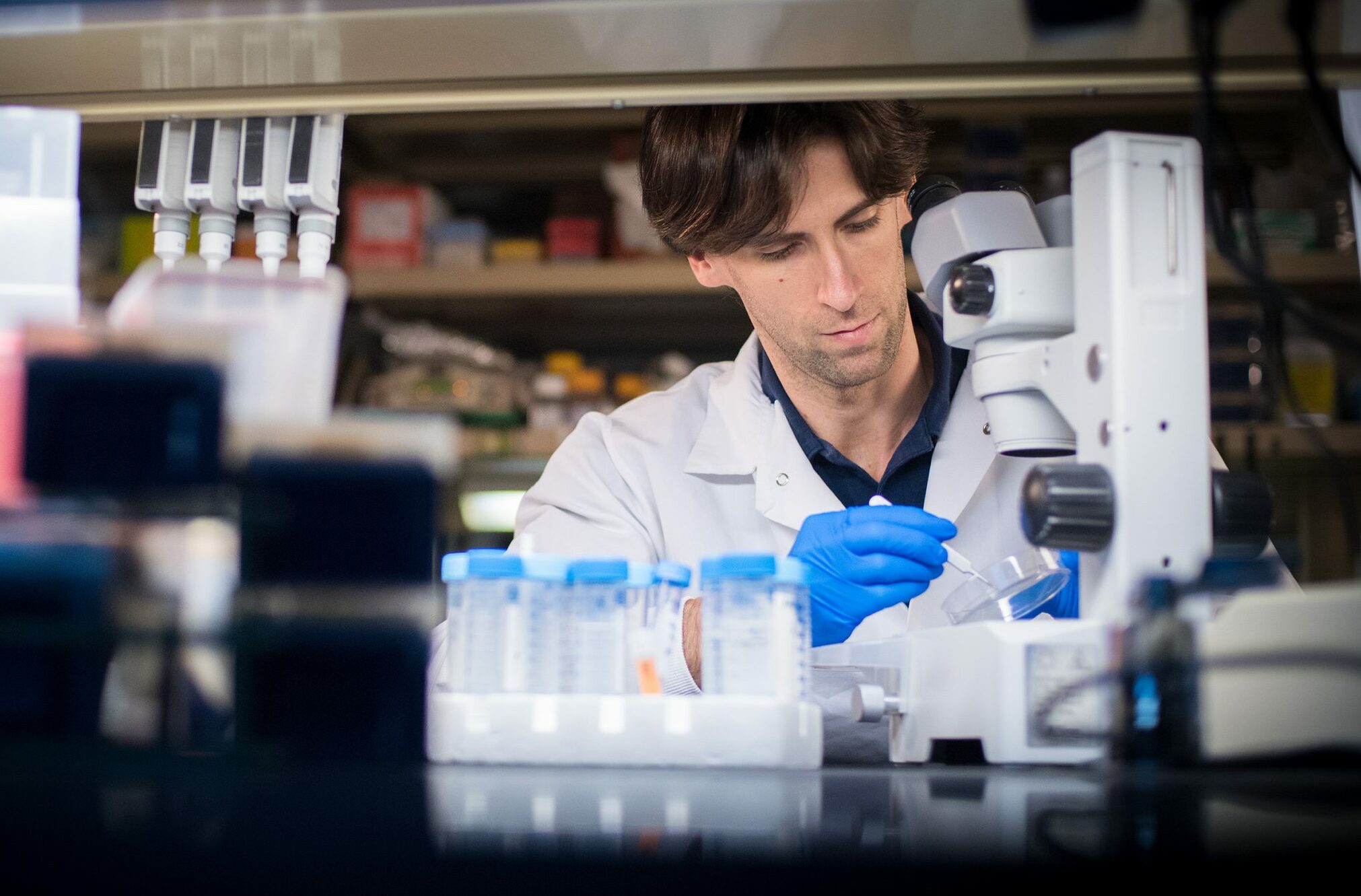Acute lymphoblastic leukaemia

What is acute lymphoblastic leukaemia (ALL)?
Acute lymphoblastic leukaemia (ALL) is a type of leukaemia and therefore a type of blood cancer. The word ‘acute’ in the name indicates that the disease may progress very quickly. The word ‘lymphoblastic’ (sometimes called lymphocytic) refers to the type of blood cells affected – lymphoblasts. ALL is an aggressive type of leukaemia and can cause symptoms very quickly.
Acute lymphoblastic leukaemia is rare and is most often diagnosed in children aged 0-4 years. Adults can also be diagnosed with ALL.
Acute lymphoblastic leukaemia (ALL) symptoms
It’s important to remember patients may experience different symptoms of ALL. Signs and symptoms of acute lymphoblastic leukaemia can include:
- Fatigue
- High temperature
- Pale skin
- Frequent infections
- Shortness of breath
- Bruising and bleeding easily
- Unexplained weight loss
- Bone pain
Signs of ALL are often similar to symptoms experienced in the main types of leukaemia. If you’re experiencing one or more of these symptoms, it’s very important that you see your GP and ask for a blood test. If your symptoms are a type of leukaemia, early detection can significantly improve the success rate of your treatment and recovery.
Facts about acute lymphoblastic leukaemia
- Approximately 790 new people are diagnosed with ALL in the UK every year.
- ALL accounts for less than 1% of new cancer cases in the UK.
- The survival rate for children diagnosed with ALL is over 90%.

How does ALL develop?
ALL develops in white blood cells called lymphocytes in the bone marrow. The bone marrow is the soft inner part of the bones, where new blood cells are produced. Every blood cell grows from a stem cell in the bone marrow. Normally, the stem cells make an early stage of the blood cell called a blast. These blasts should develop into healthy blood cells. In the case of lymphoblasts, these derive from lymphoid stem cells, and develop into fully functioning lymphocytes. Lymphocytes have a vital role in the immune system and protect against infection.
This type of leukaemia, acute lymphoblastic (ALL) develops when immature lymphocytes/lymphoblasts start multiplying uncontrollably, resulting in increased numbers in the blood and bone marrow. The abnormal/immature lymphoblasts could now be considered as leukaemia cells. ALL can be described as having too many leukaemia cells in the bone marrow and the blood. The leukaemia cells may spread to the lymph nodes, spleen, liver, central nervous system and other organs. In addition, excessive numbers of lymphoblasts or leukaemia cells begin to accumulate in the bone marrow, preventing it from producing healthy blood cells.
ALL occurs when a lymphoid blood cell develops changes (mutations) in its DNA. A cell’s DNA controls how cells develop, function and die. Normally, the DNA tells the cell to grow at a set rate and to die at a set time. In ALL, the mutations result in the leukaemia cells continuing to grow and divide without any of the normal control.
Types of acute lymphoblastic leukaemia
Acute lymphoblastic leukaemia has various types and subgroups. Experts in haematology can determine the type of ALL by looking at the structure and features (characteristics) of the leukaemia cells under a microscope. A lymphoid stem cell develops into lymphoblast and then either a B-lymphocyte or T- lymphocyte. The type of ALL can be either B-cell ALL or T-cell ALL and knowing which type can help a doctor decide what is the best treatment.
- B lymphocytes make antibodies that help protect from infection such as viruses and bacteria.
- T lymphocytes circulate in the blood, seeking out infected cells. When they discover an infection, they may destroy the infected cell whilst sending a signal to activate the rest of the immune system including the B lymphocytes.
The are several types of ALL and also further subgroups:
B-cell acute lymphoblastic leukaemia (B-cell ALL or B-ALL)
B-cell ALL is the most common type of ALL in adults and affects the B-cell lymphocytes. Around 75 people out of every 100 (75%) with ALL have this B-ALL subtype.
B-cell ALL can be further divided into subgroups:
- Precursor B cell ALL
- Mature B cell ALL (sometimes called Burkitt type ALL)
- Common ALL
- Pro B cell ALL
T-cell acute lymphoblastic leukaemia (T-cell ALL or T-ALL)
T-cell leukaemia is an uncommon type of blood cell cancer that affects the T-cell lymphocytes. T-cell ALL is more likely to affect young adults and is more common in men. Around 25 out of every 100 people with ALL (25%) will have this T-cell ALL subtype.
T-cell ALL can be further divided into subgroups:
- Large granular lymphocytic leukaemia
- Adult-T cell leukaemia/lymphoma
- T-cell prolymphocytic leukaemia
Sometimes it is difficult for experts to distinguish T-cell ALL from T-cell lymphoma and they are often grouped together.
Philadelphia positive ALL (Ph+ ALL)
Philadelphia positive acute lymphoblastic leukaemia is a rare subtype of ALL. Approximately 25 of cases of adult ALL are diagnosed with the Ph+ ALL subtype.
Ph+ ALL is the same as the other types of ALL and affects the type of white blood cell called lymphocytes. What makes it different from standard ALL is that it has a well-known change in the DNA of the leukaemia cells. Ph+ ALL develops when a gene called ABL1 on chromosome 9 breaks off and attaches to another gene called BCR on chromosome 22. The result is a new gene called BCR-ABL1 which results in the cells making too much of a protein called tyrosine kinase. The extra protein encourages the leukaemia cells to grow and multiply.
There are targeted cancer drugs called tyrosine kinase inhibitors (usually imatinib) that are used to block the protein. This helps stop the leukaemia cells from multiplying.
Treatment for acute lymphoblastic leukaemia
Due to the acute (fast developing) nature of ALL, sometimes immediate treatment is required. Your doctor will be able to give guidance on what type of treatment is best, and possible side effects.
The main treatment options for ALL** can include:
- Targeted cancer drugs
- Steroids
- Antibiotics
- Stem cell or bone marrow transplant
- Radiotherapy
- Immunotherapy
Read more about common treatments for leukaemia.
At Leukaemia UK, we firmly believe that research has the power to make a difference and truly change lives. Our research team are constantly researching kinder and more effective treatments for different types of leukaemia, including ALL.
Searching for answers – Leukaemia UK funded research
B-ALL is difficult to treat and remains a clinical challenge for some groups of patients. Dr Simon Richardson, John Goldman Fellow, wants to change this outlook. The eventual goal of his research is to improve B-ALL treatment options and ultimately save lives.

References
Facts and statistics quoted on this page are derived from a number of sources which include: The Office of National Statistics (ONS), Cancer Research UK (CRUK), Haematological Malignancy Research Network (HMRN), Blood Cancer UK (BCUK), Lymphoma Action & Myeloma UK
*ALL Symptoms – Source: Cancer Research UK
**ALL Treatments – Source: Cancer Research UK


